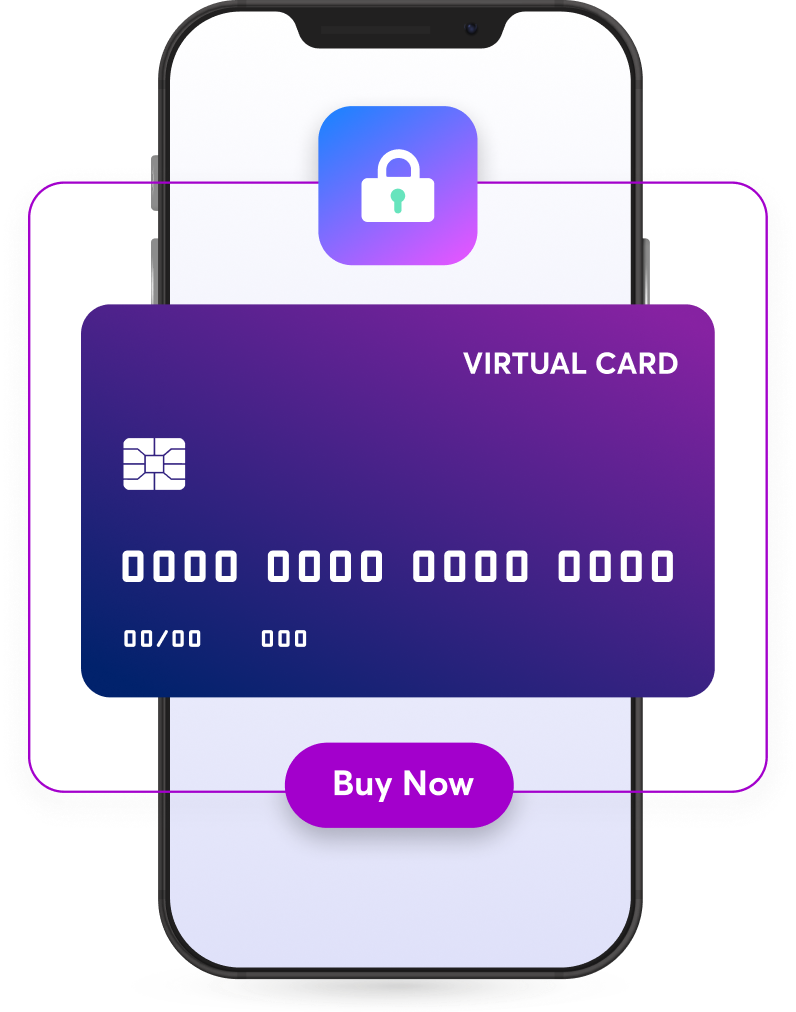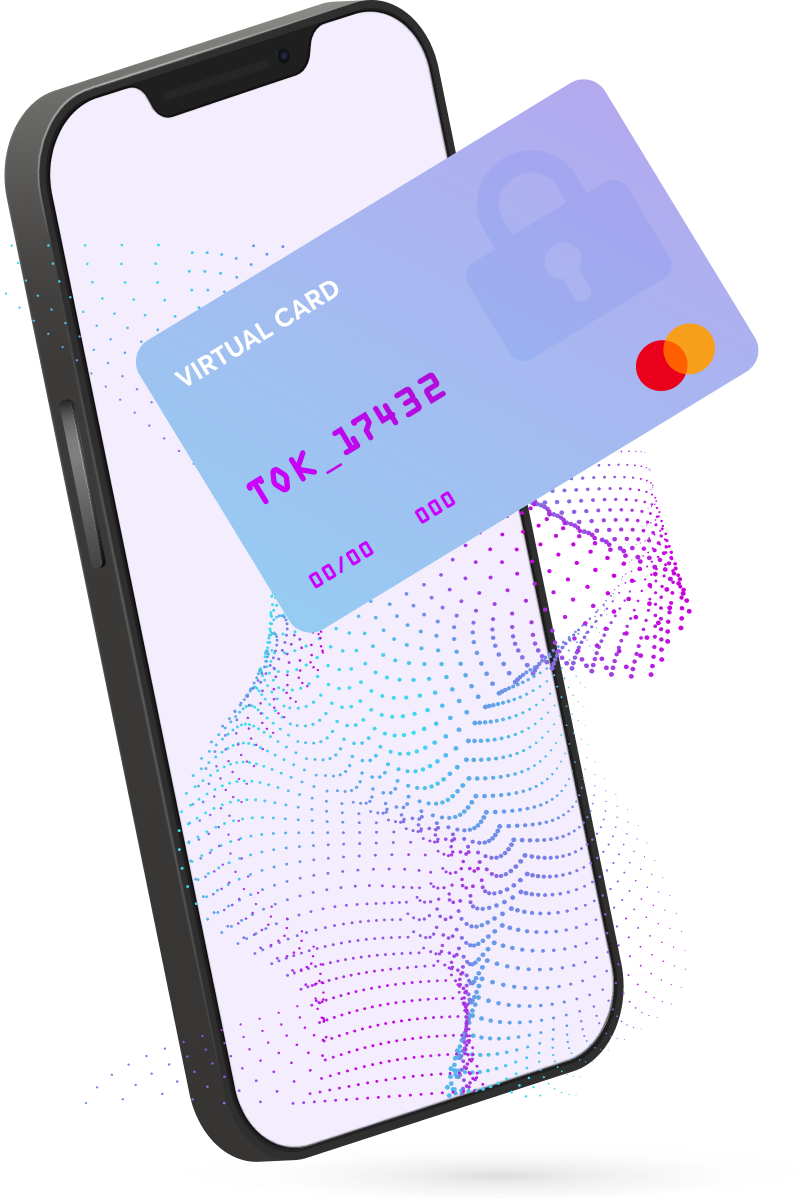Agentic commerce represents a transformative opportunity for companies poised to usher in the next era of e-commerce by using conversational AI. Especially when it comes to the payment process of agentic commerce. Currently, a payment on an agentic commerce platform is complex. For example, ChatGPT won't handle the actual transaction and instead provides you with steps to complete the transaction off the ChatGPT platform.
How some AI platforms get around this is by issuing a virtual card.
But how are virtual cards used today? How are they used in agentic payments?
Let's start from the beginning...

What are virtual cards and how are they used today
Virtual cards emerged as a response to growing concerns over online payment security and the need for more flexible, controlled financial transactions in the digital age. Originating in the 2000s, virtual cards were introduced as a way to generate single-use or limited-use card numbers that could mask a user's real account details during online purchases. This innovation significantly reduced the risk of fraud, data breaches, and unauthorized charges, especially as e-commerce began to take off.
For consumers, virtual cards allow for safer online shopping, subscription management, and even temporary payment credentials. A virtual card's usefulness lies in the ability to enhance both security and spend management, offering convenience, traceability, and control in ways that traditional plastic cards cannot. As time has gone on, virtual cards have become more frequently used because of the enhancements they provide.
You may have noticed that virtual cards are increasingly gaining traction in the B2B payments space, particularly in industries like travel, where they enhance security, speed, and efficiency in settlement processes. Another compelling use case is in the Buy Now, Pay Later (BNPL) model, where lenders can issue virtual cards to settle payments with merchants on behalf of consumers. This approach is especially valuable because it leverages the merchant's existing payment infrastructure while eliminating the need for complex integrations involving webframes, secure data transfer, and backend reconciliation. As a result, virtual cards enable faster onboarding, reduced operational friction, and scalable, secure payment solutions.
The proliferation of neobanks and digital wallets further fueled the adoption of virtual cards, a trend significantly amplified by the pandemic's acceleration of digital payment methods, the rise of remote workforces, and a surge in online spending.
Beyond convenience, virtual cards offer sophisticated control features such as customizable spending limits, adjustable expiration dates, and merchant category code (MCC) restrictions. These advanced capabilities make them particularly appealing for managing employee spending through platforms, like Navan, TravelPerk, or even Expensify, and streamlining business and purchasing card processes for supplier payments and accounts payable.


The obstacles of virtual cards
While virtual cards offer numerous benefits, they also have some drawbacks for consumers, merchants, and networks, including:
1
Recurring Payments
The fundamental strength of many virtual cards lies in their single-use nature. If a customer uses a single-use virtual card for the initial setup of a recurring payment, such as a subscription or service, subsequent billing attempts will likely fail because the original card number is no longer valid or has insufficient funds. Merchants then have to chase down updated payment information, and customers might not respond promptly to requests, leading to delays in payment or even complete cancellation of the subscription or service.
2
Acceptance
Even with the rise of digital payment acceptance, there is still an acceptance gap with virtual cards in card-present transactions. Virtual cards were designed specifically for CNP (card-not-present). Many smaller merchants, especially in less developed countries, may not have the appropriate POS systems (e.g., Contactless/NFC technology) to process virtual cards.
For consumers, a significant limitation is the lack of universal acceptance, particularly for in-person transactions where a physical card is often required, such as at restaurants, hotels, or car rental agencies.
3
Reconciliation
While virtual cards offer buyers benefits like enhanced security and faster payments, some merchants worry about the increased complexity and costs associated with processing these transactions, particularly reconciliation and higher fees. For example, virtual card payments often arrive with unique card numbers for each transaction. This can make it difficult and time-consuming for merchants to match these payments with specific invoices, especially without automated systems.
4
Program Guidelines / Participating Rules
Card Networks see tremendous value in their virtual card products, but also recognize a need to regulate how individual programs are allowed to operate to ensure all parties impacted receive value in the experience.
How a business leverages virtual cards can change dramatically depending on its underlying business and the program structure. For instance, businesses that create their own 'Network' of clients, who opt in to virtual card acceptance, have more flexibility relative to their operating principles. These businesses can choose various credential types (i.e. credit v debit, commercial v consumer) depending on the transaction in question, as well as provide various forms of distribution to their end merchants (API, auto-populate, manual entry, mobile provisioning, etc.)
5
Back-to-Back Transactions
Card Networks typically prohibit programs in which multiple transactions occur in a real-time, successive nature. In these instances, a user would spend on their personal card from their primary bank to pay the AI Agent, and the AI Agent would subsequently fund a virtual card to complete the transaction at the merchant storefront. The lack of visibility from the original bank's point of view creates a degree of concern, as it is no longer possible for their fraud models to appropriately analyze the cardholder's behavior or risk associated with the underlying purchase. Lastly, virtual card programs can disrupt 'top of wallet' considerations for a consumer and merchant. Inserting a new credential into the transaction displaces cards from other financial institutions that may have strategic deals in place to ensure their card remains a priority.
6
Interchange Fees
Most VCC, or Virtual Credit Card, models today are built on commercial credentials. In these scenarios, the agentic commerce flow would replace typical consumer interchange with commercial interchange, benefiting from the difference in spread (60+ bps depending on several factors) and costing the unknowing merchant more money to facilitate said transaction.

Virtual cards and agentic payments
Virtual cards play a key role in agentic commerce by enabling autonomous software agents to securely and efficiently execute transactions on behalf of users or businesses. The process begins when an AI agent identifies a purchasing need, such as subscribing to a service, buying digital goods, or ordering supplies. The agent then requests a virtual card, typically issued through a secure payments API, specifying spending limits, merchant restrictions, and expiration parameters tailored to the transaction. Once virtually issued, the virtual card is used to complete the payment seamlessly. After the transaction, the card can be automatically deactivated or reused according to policy rules, and transaction data is logged for auditing and financial reconciliation. The process offers security, traceability, and autonomy.
Although virtual cards have hindrances, they are currently a predominant payment method for agentic commerce transactions. When a consumer prompts a purchase on an AI platform leveraging an AI Agent, the purchase of the goods is facilitated by a virtual card issued via the AI Agent, and the consumer's card statement will show only a transaction as the AI platform used as a merchant-of-record (MoR).
This basic flow has so many different areas of complexity behind it that some questions remain:
- How does the first transaction get attributed to the underlying MoR?
- How does the merchant know it's a cardholder-initiated transaction?
- How does the PSP ensure that both transactions have the same interchange, run on the same network, recognize chargebacks, etc.?
Virtual cards enable agentic commerce and provide the right tools around security (tokenized, limited lifespan, merchant category code restrictions, etc.). However, there are many concerns around controls and governance that require a proper framework to enable agentic payments seamlessly and within the network rules. Ultimately, virtual cards are not the best solution to the problems faced in agentic commerce.
What we do know is that ensuring a seamless pass-through of payment credentials between the parties (consumer, issuer, agent platform, merchant) is at the core of agentic commerce. That is where tokenization comes in.
Tokenization is the ideal payment solution for agentic commerce.


Tokenization in agentic payments
When it comes to payments, transactions have to be PCI-compliant, and any AI agent collecting card data needs to abide by the set of standards. Tokenization not only provides a PCI-compliant solution in agentic commerce but also helps avoid the friction virtual cards can present during a transaction.
With major networks driving the charge, such as Visa's Intelligent Commerce and Mastercard's Agent Pay, tokenizing data to enable secure credential sharing is leading the forefront of successfully empowering agentic commerce platforms to allow seamless payments.
At VGS, our tokens were built to be transmitted to third parties, solving the problem of PCI compliance and smooth payments for agentic commerce platforms. With stored data tokenized, agents can connect with merchants, other agents, and third parties to share, route, and process transactions reliably. There will be no more reconciliation issues, recurring payment failures, or top-of-wallet troubles.
Agentic commerce platforms can leverage tokenization as a solution to their payment strategy and get back to scaling their growing business.
Learn More



